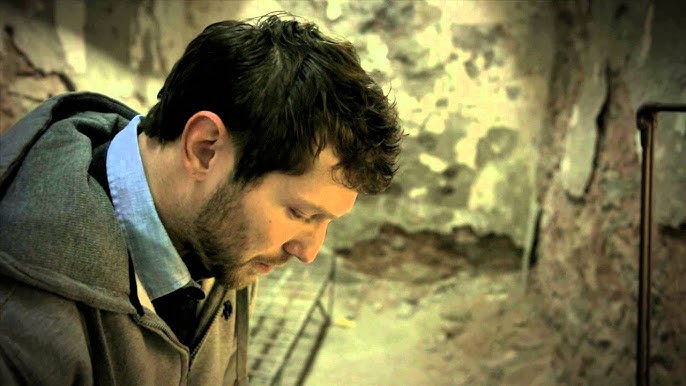Conceptual and pop artist Jesse Krimes builds his work upon the foundation of his six-year incarceration for drugs-related offences. Refusing to emphasize the degrading aspects of imprisonment, he weaves his art around the disjointed manner in which the outside world permeates the incarcerated mind. Through the use of a variety of elements such as media images, historic portraits and even police records, Krimes aims to reflect upon the expanse and impact of the predominant American prison system. This system, currently, holds around two million individuals across federal and state facilities.
Krimes’s work is a focal point at two exhibitions in New York. Arranged in ‘Jesse Krimes: Corrections’ at the Met, curator Lisa Sutcliffe orchestrates a conversation between Krimes’s pieces and the French police records of alleged anarchists from the 1890s, photographed by Alphonse Bertillon. Their somber, uniformed faces looking into the viewer forms a stark contrast to ‘Purgatory’ (2009), a creation by 42-year-old Krimes during his year-long spell in pretrial solitary confinement.
Krimes’ ‘Purgatory’ was constructed during his period of confinement by modifying decks of poker cards which were prevalent among the inmates. Using toothpaste, he attached 21 cards to form a solid block. On this block, he carved out a rectangle, filling it with a bar of soap issued by the prison, which held transferred drawings of mugshots obtained from a local newspaper. With time, he evolved his work to incorporate familiar celebrity faces, thereby illustrating the potential for anyone to turn into an outlaw. With around 300 such creations shipped to a friend, two at a time, ‘Purgatory’ is now an enduring part of the Met’s collection.
Before his legal predicament, Krimes completed his art major studies from Millersville University in Pennsylvania in 2008. His conviction led him to a federal penitentiary, where he conceived a more complex project than ‘Purgatory’: ‘Apokaluptein: 16389067’ (2010-13). Using hair gel, he pressed and embedded various images onto 39 bedsheets, a process akin to the function of prisons – to hide bodies, a correlation that may not resonate with most observers.
Going forward, the work ‘Apokaluptein: 16389067’ became a highlight of a 2020 group exhibition. Divided into thematically separate layers, the lower parts depict scenes of warfare and calamity, the middle section represents the Earth, and the topmost layer paints the heavens with a serene blue. Amidst these scenes, large images of fashionably attired women stand out prominently, pasted from full-page ads. Drawn in by Krimes using colored pencils, other female figures dance elegantly yet clumsily among these fashion icons. The artwork is also interspersed with depictions of renowned paintings.
‘Apokaluptein’, meaning revelation or disclosure in Greek, is apt as fragments of the external world that reach prisoners are often distorted, and Krimes captured this essence in his artwork. With access to the outer reality limited to newspapers, the prisoners’ perception of the world becomes notably skewed. Krimes works this theme into his art, tinting these cultural snapshots as guises of societal values and what we deem worthless.
Upon his release in 2014, Krimes became a vocal advocate for reforming the corrections system and took up the cause of ex-inmates. He kickstarted the Center for Art & Advocacy, focusing on promoting the creativity of former prisoners. This union of shared experiences defines his artwork.
Krimes sought prisoner participation for his latest creation, ‘Naxos’ (2023-24), wherein he requested inmates to send him their ‘ideal pebble’ from the prison yard. Tying these stones with threads dyed to match those of ‘Apokaluptein: 16389067’, he created a suspended aggregation of nearly 10,000 stones. His fascination with the mythological tale of Ariadne’s abandonment by Theseus on the island of Naxos, after navigating the labyrinth to slay Minotaurs with her thread, is evoked here in his portrayal of the justice system as a confusing labyrinth.
Impressive pieces encompass ‘Jesse Krimes: Cells’ at the gallery, featuring art he developed this year. A sublime piece, ‘Minos and the Minotaur’, merges an antique wooden mousetrap posing as a face, a slender body made from a surveyor’s tripod, and pebbles received from inmates that hang and bunch at the base. Even without knowledge of the prison-related backdrop, the sculpture commands a sinister, predatory aura.
‘Ariadne’s Dancing Ground I-XIII’ is another arresting work. Here, the wrapped pebbles make a repeat appearance, positioned as decorative end pieces on curvy concrete strands, sprouting like exotic flowers from the earth.
Krimes’s wall compositions within ‘Jesse Krimes: Cells’ are designed as palimpsests. He superimposes his embroidery work, made with inmate gifted clothing, upon transferred historical art images such as scenes from the ‘Hunt of the Unicorn’ medieval tapestry.
The embroidery patterns are adapted from microscopic images of healthy tissues after the removal of cancerous growths, symbolizing redemption for those entrapped in the penal system. Nonetheless, the manipulated images can be perceived as representing a criminal justice system that effectively eradicates societal cancer.
The dense embroidery semantic in ‘Cells’ conceals the underlying image, free interpreting Krimes’s point about the obscurity of prison life and the vast incarceration network. Yet, as his career progresses, the intricate symbolism often muddles his core message. Despite the occasional ambiguity, his work often prevails on aesthetic grounds rather than political. This could be seen as a victory in itself: showcasing Krimes’s firm belief in art’s transformative capacity to elevate the human spirit above prison-induced humiliation.


